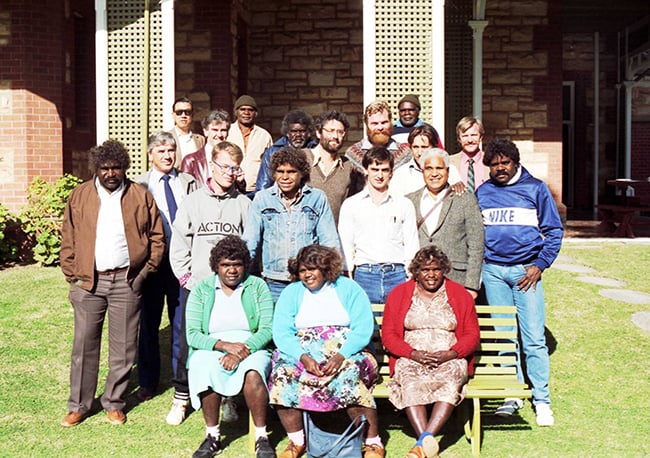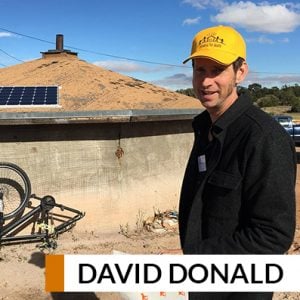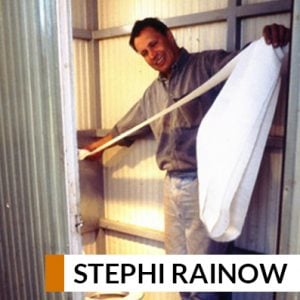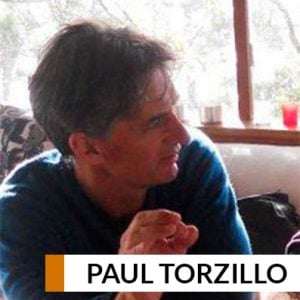Timeline
1985...
The three directors, of what years later was to become HH, were invited by Yami Lester and Punch Thompson to work with a team of local Anangu to ‘stop people getting sick’ or in the local language ‘Uwankara Palyanku Kanyintjaku’. For reasons of brevity, this became known as the UPK report.
Timeline 30+ years and counting
- 2023
- 2022
- 2021
- 2020
- 2019
- 2018
- 2017
- 2016
- 2015
- 2014
- 2013
- 2012
- 2011
- 2010
- 2005-9
- 2001-5
- 1995-99
- 1990
- 1985
2023
- Housing for Health projects continue in NSW, NT, WA & USA
- HH collaborated with University of Newcastle for the “Hot House” course
- Housing for Health Team leader training sessions held
- New Housing for Health Project Manager appointed
2022
- Milestone of 10 000 houses surveyed and fixed on Housing for Health projects
- Nepal School Toilet Design Guide launched
- Housing for Health & MaintainingHouses for Better Health projects continue in NSW & NT, commence in WA
- Housing for Health Team leader training sessions held
- New Housing for Health Project Managers appointed
2021
- Housing for Health & MaintainingHouses for Better Health projects continue in NSW, NT, WA & USA
- New Housing for Health Project Manager appointed
2020
- New website developed and launched
- Development of a Maintenance Manual, Toolkits and Training Package for ongoing maintenance of school sanitation facilities in Nepal
- Housing for Health projects continue in NSW and NT
2019
- New company structure – registered charity
- the Nepal School Sanitation Project continues with the design and construction of new water supply, hand washing, toilets and waste disposal systems in two schools; Saraswoti Basic School (Laspe village) and Panchakanya Basic school (Chamkhu village). UoN Sanitation Studio with architecture students and international trades.
- HH collaborate with partner IAPMO on the CPC Navajo Mountain project, Arizona USA, involving plumbers and carpenters, and a Housing for Health Survey-fix
- A comprehensive report released by WASSUP detailing the full extent of the work in Deipsloot
- HH collaborate with partner IAPMO on the CPC Sulawesi project, working with architect students and plumbers on the design of new community toilet facilities in Makassar, Sulawesi, Indonesia
- Housing for Health projects recommence in 4 communities across the Northern Territory, Australia
- Housing for Health projects continue in NSW
2018
- The Nepal School Sanitation Project continues with the design and construction of new water supply, hand washing, toilets and waste disposal systems at Shree Bhotenamlang School. UoN Sanitation Studio with architecture students. All remaining houses in Bhattedanda village rebuilt incorporating HH earthquake banding system.
- The building of toilet blocks at Bhotenamlang School begins by local team, 2 Worldskills plumbers from Australia and India help with training and skills
- Sanitation and Health Project Sarawoti and Panchakanva Schools. Site visit and feasibility done
- HH collaborate with IAPMO on the CPC Navajo Nation project, New Mexico USA, involving plumbers, electricians, architects and a Housing for Health Survey-Fix
- HH commence an update of ‘Housing for Health – The Guide’
- Housing for Health projects continue in NSW
2017
- The South African Health Improvement project continues in Diepsloot, working with WASSUP to improve ongoing maintenance systems for 100 upgraded toilets, and collecting and using data to fix and advocate for better toilets facilities across the Extension 1, Diepsloot
- Nepal Sanitation Studio and Health Project Tipeni was held including WorldSkill Foundation plumbers, students from the Universities of Sydney and Newcastle. The Studio is hosted by CHDS Nepal and HH
- The first 10 houses with HH earthquake banding system rebuilt in Bhattedanda Village, Nepal
- CPC Indonesia, a team of 7 plumbers, 4 architects, 2 engineers and a project manager design and build new water storage, toilets, handwashing and waste disposal system for a school in Java
- Housing for Health projects continue in NSW
2016
- February – Passing of Director and Founder Paul Pholeros AM
- HH invited as a knowledge partner in “Change Makers Room” in India
- the South African Health Improvement Project continues in Diepsloot, Johannesburg with the installation of 14 new toilet systems, and culminating in the:
- CPC Diepsloot – where an international multidisciplinary team upgrade 8 toilets and develop effective and sustainable solutions
- the Nepal School Sanitation Project continues with the design and construction of new water supply, hand washing, toilets and waste disposal systems in Thangpal Dhap School
- House reconstruction begins in Nepal, with earthquake banding to increase structural resistance
- Andrew Whalan wins Reece Grant for HH work in Nepal
- Housing for Health projects continue in NSW
2015
- Karin Richards and Dave Donald directors of HH O/S
- Community Plumbing Challenge (CPC) India – a collaboration with IAPMO saw international teams assemble in Nashik to improve sanitation facilities in a regional school
- Sago Network Toilet system trial in PNG
- University of Newcastle 2x2x2 challenge to reduce trachoma in Ethiopia
- The South African Health Improvement Project continues in Diepsloot, Johannesburg with the upgrade of a further 26 toilet systems across the township
- A major earthquake in Nepal devastates many buildings
- The first Nepal School Sanitation Project commences with Jalapadevi School, Nepal, designing and constructing new water supply, hand washing, toilets and waste disposal systems
- 6 more toilet and septic systems build by the local community in Bangladesh
- Housing for Health projects continue in NSW
2014
- The second Nepal Sanitation Studio is held in Nepal. This includes WorldSkill Foundation plumbers, students from the Universities of Sydney and Newcastle and is hosted by CHDS Nepal and HH
- The South African Health Improvement Project commences in Diepsloot, Johannesburg with the support of WASSUP, Sticky Situations and the WorldSkills Foundation, with the design, upgrade, monitoring and evaluation of 10 toilet systems across the township
- The first multi-skill Water Innovation Challenge is held in Singapore by WorldSkills with ‘real-world’ briefs for the competition prepared by HH. Team USA wins the challenge from Team Australia
- Scoping trip to Ethiopia in collaboration with the Fred Hollows Foundation
- Housing for Health projects in NSW continue and over 8,000 houses have now been improved. The new Australian Government makes no decision about the Housing for Health national program
2013
- Nepal Sanitation Studio held with support from Egress Studio, the World Plumbing Council, Worldskills Foundation, RMIT and IAPMO developing new design ideas to improve rainwater storage quality
- HH invited to the Commonwealth Association of Architects Conference in Dhaka, Bangladesh
- HH invited to present a TEDx talk on the theme of Housing for Health at the Sydney Opera House, Australia
- Bangladesh Sanitation Workshop develops the design and program for 2 proto-type washing and toilet units in northern Bangladesh for construction in October 2013
- A meeting in Leipzig Germany chaired by the WorldSkill Foundation agrees to support 4 international projects proposed by Healthabitat in Nepal, Bangladesh, Papua New Guinea and South Africa
- HH invited to exhibit in the CUSP travelling exhibition and Powerhouse Museum, Sydney
- Launch of Housing for Health – the Guide – a free online resource publishing guideline for ensuring and maintaining living environments with national data from over 7500 houses tested nationally
- Construction by SAFE, a local Bangladesh NGO, commences on 2 proto-type washing and toilet units
- Preliminary feasibility work with WASSUP and Sticky Situations in Diepsloot, South Africa completed in preparation for construction works in 2014
- Housing for Health projects continue in NSW
2012
- World Habitat Award study tour to Nepal hosted by BSHF(UK), CHDS (Nepal) and HH
- 15 more toilets built in Nepal
- Healthabitat requested to establish a sanitation project in Bangladesh and commences the feasibility for a program in Dhaka.
- Housing for Health roundtable London chaired by Building and Social Housing Foundation (UK) and Healthabitat
- Healthabitat’s Housing for Health project chosen to represent Australia in the World Architectural Biennale, Venice Italy
- Amnesty International commences a campaign for better Indigenous Housing in Australia
- Housing for Health projects continue in NSW
2011
- Toilet construction manual developed by CHDS. Trail Trial toilets built in Dandagaun and Arubot, Nepal
- Healthabitat wins national Australian Institute of Architects Leadership in Sustainability Prize for sustaining people
- Healthabitat wins the UN Habitat, World Habitat Award from 250 entries received from 82 countries
- Mid 2011 – Australian Government ends funding for the national Fixing Houses for Better Health program, running since 1999
2010
- 58 Toilets and waste disposal systems completed for 298 people in Nepal
- A trial Housing for Health project commences in Brooklyn, New York City, USA
- Review of the health impact of 10 years of Housing for Health projects completed and published by NSW Department of Health shows a 40% reduction in illnesses associated with a poor living environment
- Healthabitat decides to decline further contracts with the Australian Government commencing 30th June 2011.
- Housing for Health projects continue in NSW
2005-9
- 2009 – Healthabitat extends the previous contract for an additional 2 years to provide the Australian Government with a range of applied research and development projects and Fixing Houses for Better Health projects nationally. Housing for Health projects continue in NSW
- 2007 – Healthabitat commences work on improving the sanitation of a small village in Nepal with Australian and Nepali partners
- Healthabitat wins the International Union of Architect’s prize for the long-term alleviation of poverty
- the 3rd edition of the National Indigenous Housing Guide developed by Healthabitat is published by the Australian Government
- 2005 – Healthabitat wins a 3.5-year tender to provide the Australian Government with a range of applied research and development projects and Fixing Houses for Better Health projects nationally
- First website developed
- Housing for Health projects continue in NSW
2001-5
- 2004 – Independent review of the FHBH program is completed and is overwhelmingly positive. The review recommends longer duration contracts and expansion of the work
- 2003 – the 2nd edition of the National Indigenous Housing Guide developed by Healthabitat is published by the Australian Government
- 2001-2005 – FHBH program and HfH projects continue nationally, improving over 3,000 houses by 2005. Contracts are for one year only and require at least 6 months of negotiation to complete. Additional HfH projects continue improving houses in NSW and are managed by the NSW Department of Health with the Department of Aboriginal Affairs and the Aboriginal Housing Office
1995-99
- 1999 – Agreement by the Australian Government to implement the first national Housing for Health program planned by Healthabitat to improve 1,000 houses. The program was re-badged Fixing Houses for Better Health (FHBH) to reflect the Federal Government funding
- the 1st edition of the National Indigenous Housing Guide developed by Healthabitat is published by the Australian Government
- 1996 – The first Queensland Housing for Health trial project was commenced at Pormpuraaw, north-west Cape York peninsula
- The first New South Wales Housing for Health trial project was commenced at Muli Muli, in the northern part of the state
- The first regional (6 community) Housing for Health trial project, was commenced in the Murdi Paaki region of western NSW
1990
- 1991 – The Housing for Health project Pipalyatjara, north-west South Australia commences to evaluate the impacts of the UPK report. It was during this project that the preliminary Housing for Health (HfH) methodology was developed
1985
- 1988-90 UPK becomes a nationally accepted idea
- 1987 – The release of the UPK report defines the nine Healthy Living Practices
- 1985 – Healthabitat directors meet for the first time working on the UPK environmental health review on the Anangu Pitjantjatjara Lands in the north-west of South Australia
- Dr. Paul Torzillo AM was the medical officer working at the Pukatja (Ernabella) health clinic for the newly formed Nganampa Health Council
- Stephan Rainow had lived and worked in the area since 1977. He spoke the local Pitjatjantjara language, and, whilst trained as an anthropologist, had also worked on landscape and community development projects
- The late Paul Pholeros AM had been engaged as an architect by Nganampa Health Council to carry out additions to a small health clinic in Fregon. He was also involved with projects at Uluru and the Mutitjulu community in the Northern Territory















